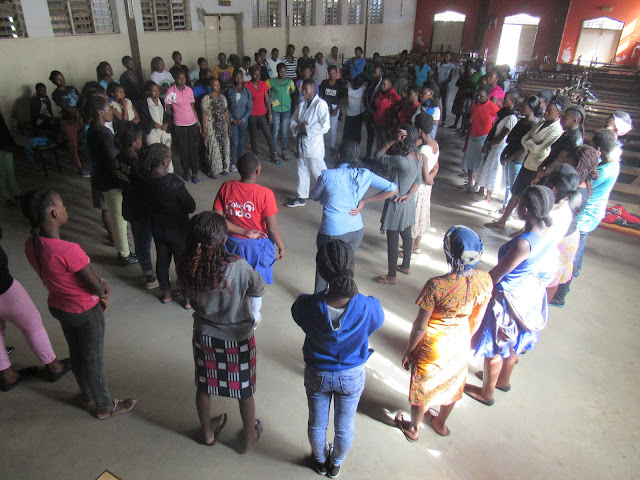While ‘Jesus Christ Superstar’ is in its final countdown
before the Andrew Lloyd Webber musical opens April 7th at Kenya
National Theatre, a variety of other players were staging performances last
weekend.
At the Point Zero Book Café, Mshai Mwangola, Mueni Lundi and
Aghan Odero (the Performance Collective) were busy preparing fellow book-lovers
for scintillating discussions next month on two hard-to-get books, Miriama Ba’s
‘So Long a Letter’ and Taiye Selasi’s ‘Ghana Must Go’. They gave both books a
contextual and historical framework, assisted by Dr. Wandia Njoya of Daystar
University. They also did illuminating readings from the books which compelled
one to buy the books (which arrived from overseas last Saturday) and read them
before next month’s Book Café session.
The performance collective launched their Book Café at Point
Zero Coffee (next to Nairobi Gallery several months back with Yvonne Owuor’s
award-winning novel, ‘Dust’. The two-session book readings and discussions
proved so successful that the Book Café is now a semi-permanent fixture of the
boutique coffee house. PZC’s Andrea Moraa also shared her expertise, giving a
tasty coffee talk during each session.
Meanwhile, the Dance Centre of Kenya (DCK) staged two evenings
of contemporary dance entitled ‘Tribute: Celebrating International Dance’. On
Friday evening, DCK’s artistic director Cooper Rust brought her students to
perform at Purdy Arms, and on Saturday, they danced again at Braeburn Theatre.
The ‘International’ dimension of the show came in the shape
of choreographers since three out of the six who created dances were either
Dutch (Caroline Slot Wamaya), Jamaican (Natasha Frost) or American (Stephanie
Wilkins).
The other three were Kenyans. There was Michael Wamaya who
co-founded the slum-based dance centre, Ghetto Exposed (GE) with his wife
Caroline Slot. He continues to teach underprivileged kids and was among the top
ten finalists up for the Global Teacher Prize 2017. He choreographed Leso for
almost 20 DCK students.
Willy Kwach, who specialty is teaching hip hop, jazz and
urban contemporary dance at DCK choreographed ‘Behind Curtains’. And Francis
Muturi, a GE graduate, designed The Work Song which he also performed with fellow
GE grads, hip hop dancers David Kinuthia and Elvison Elodanga.
The height of contemporary choreography came with Stephanie
Wilkins’, ‘Enlightenment’, which was a four-part dance featuring practically
all of DCK’s star students and meant to trace dancers’ progressive development
from novice to professional.
But however exciting this contemporary dance showcase was,
it was still slightly disappointing not to see even a small bit of ballet.
After all, it’s Cooper Rust’s superlative ballet background and teaching skills
that brought DCK into being. But then it’s also true that DCK has already
transformed many young Kenyans’ lives, be they dancers of ballet, hip hop or
urban contemporary.















